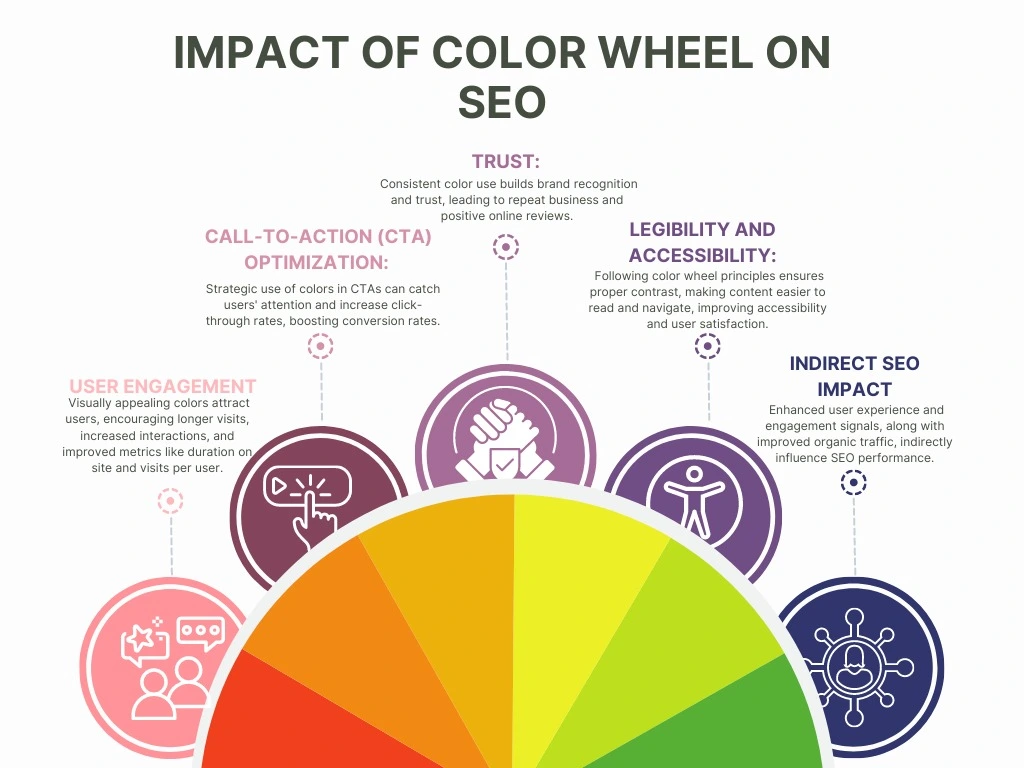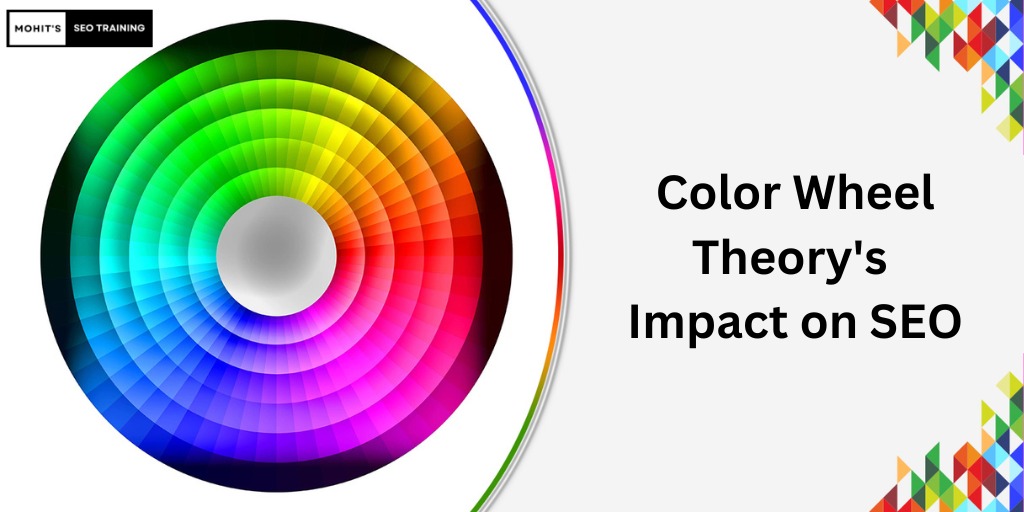Combining “big picture” thought and minute devotion to detail are necessary for SEO. The color wheel idea is a useful tool for visualizing SEO and developing a logical plan for succeeding in SERPs. The term “content SEO“ describes the process of producing content that promotes website rankings. It consists of subject identification, information that is pertinent to the campaign, articles and micro-topics, and media materials on topic sites.
Implementing the color wheel involves understanding SEO. It entails developing five to six groups that take into account the mental makeup of the searcher and developing subsections of material and micro-topics.
Nevertheless, color wheel theory is definitely something to look into. If nowhere else, it will help you visualize your SEO and refine it into an orderly framework, that is after all one of the crucial elements to obtaining rankings in SERPs.
Additionally, it ought to be a useful tool for explaining to employees or participants in the project what will be generated and what subjects and phrases will be targeted inside the larger, more intricate website framework.
Also Read: Does Changing Theme Affect SEO
Why Use the Color Wheel Theory for SEO?
Color wheel theory enables the construction of an arrangement that is predicated on the creation of 5–6 categories for your internet presence that are intended to appeal to the mind of the searcher.
Then you develop your content categories and further choose “micro-topic” connections and backlinks. These micro-topics in turn offer more chances for connecting to or sharing from your site’s important pages and important social media profiles.
The pages with indexes that are most likely to draw new visitors will be shown in the wheel’s Centre.
In general, the outermost portions of the wheel are made up of your searchable core website content and landing pages. Additionally, each section, from the exterior to the inside, enhances the efficiency of content reach.
The color wheel hypothesis might be a useful tool for improving your SEO strategy. Colors have the power to affect how people feel and perceive things, and they may also affect how people behave and interact with your website. You can improve user experience, raise click-through rates, and eventually raise your search engine results by utilizing the power of the color wheel.
- Complementary Colors: Complementary colors are the opposite of one another on the color wheel. Strategically utilizing complimentary colors in your website design may produce an eye-catching contrast that highlights crucial features like call-to-action buttons or links. Higher conversion rates and greater SEO performance may result from this.
- Color associations: Different hues are frequently connected to different feelings or ideas. For instance, bright hues like red and orange might inspire thoughts of urgency or excitement, whereas cool hues like blue and green can inspire feelings of confidence or tranquility. By being aware of these associations, you can choose colors that complement the personality of your brand and enhance the visual impact of your website.
- Color psychology: Colors have an effect on how people behave psychologically. You can affect how consumers perceive your brand and content by carefully employing colour. For instance, blue is frequently connected with trust and dependability, making it appropriate for websites that deal with finances or healthcare. The appropriate color choices depending on your target market and industry will boost user engagement and time spent on your website, which can help your SEO results.
- Readability and Accessibility: When thinking about accessibility in web design, the color wheel idea is also important. For reading, especially for people with visual impairments, there must be enough contrast between the colors of the backdrop and the text. Utilizing the concepts of the color wheel and accessibility rules, you may enhance user experience, boost engagement, and cater to a wider range of users.
IMPACT OF COLOR WHEEL ON SEO

When it comes to algorithmic criteria or search engine rankings, the color wheel itself has no direct impact on SEO. However, through influencing user behavior, engagement, and overall user experience, the strategic use of colors based on the principles of the color wheel might indirectly affect SEO. The color wheel may be used in SEO in the following ways:
- User Engagement: Different moods and emotions may be evoked by different colors. You may increase the amount of users on your website by choosing colors that appeal to your target demographic and complement your brand identity. Engaging users are more likely to browse numerous pages on your website, interact with your content, and extend their time there, which may increase metrics like duration on site, rate of bounces, and visits per user.
- Call-to-Action (CTA) Optimization: Colors have the power to catch users’ eyes and prompt them to take action, especially with regard to CTAs. Your CTAs will stand out visually and attract attention if you use different colors for them. This may boost users’ propensity to click on your CTAs, resulting in increased conversion rates. Your company objectives and, indirectly, the efficacy of your SEO strategy can both benefit from increased conversion rates.
- Trust : Colors have a huge impact on how people perceive brands and how they express their personalities. Utilizing colors consistently on your website, in your logo, and in the rest of your marketing materials will assist your audience recognize you and come to trust you. Building a solid brand reputation may result in repeat business, recommendations, and favorable internet reviews, all of which may assist indirectly
- Legibility and Easy accessibility: Using the color wheel as a reference, you may choose color combinations that will provide the right contrast and readability. Since it makes your material easier to read and navigate for those with visual impairments or color vision deficits, maintaining adequate color contrast between your text and backdrop is essential for accessibility. You may make your website more inclusive and perhaps increase user happiness and engagement by following accessibility requirements.
Even though the color wheel itself has no direct bearing on SEO, using its principles to build an aesthetically pleasing, simple to operate, and brand-aligned website may improve visitor satisfaction and metrics for engagement. As a result, these elements may indirectly affect SEO performance by enhancing user signals and promoting the increase of organic traffic. It’s critical to keep in mind that SEO takes a holistic approach, taking into account a range of components including site framework, backlinks, and technological optimization in addition to aesthetic factors like color schemes.
[wpforms id=”0″ title=”false” description=”false”]
